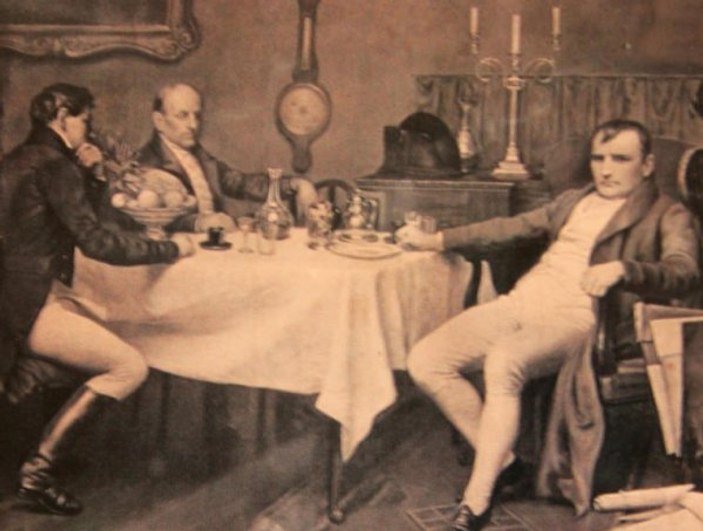Napoleon’s Favorite: The History of Turkish Delight
Discover the history, recipe changes, and surprising health benefits of Turkish Delight, a timeless treat cherished worldwide.

The Timeless Sweetness of Turkish Delight: A Global Favorite
For centuries, Turkish Delight has been a sweet treat enjoyed alongside coffee, captivating taste buds across the globe. Known as “Turkish Delight” in most countries, this sugary delight goes by different names in various regions: Rahat in Bosnia and Romania, Delicia Turca in Brazil, and Loukoumi in Greece. Turkish Delight is not only a beloved sweet but also a cultural ambassador, often bought in bulk by 75% of travelers returning from Türkiye. From engagement ceremonies to holiday celebrations, this traditional sweet has become a symbol of Turkish hospitality and heritage.
The Journey of a Traditional Delight
Who has savored Turkish Delight throughout history? Which coffee tables have been graced with these small, flavorful cubes? Rooted in the legendary Ottoman Empire, Turkish Delight stands as a testament to the richness of Turkish cuisine, now influencing over 70 countries worldwide.

Between 226 and 652 AD, during the reign of the Sasanian Empire in Persia, the most popular dessert was abhisa. It is often considered the ancestor of Turkish Delight. Although the flavor and preparation methods differ significantly, abhisa is undoubtedly an early example of the sweetness that later inspired Turkish Delight.

THE OTTOMAN EMPIRE’S FIRST BRAND: HACI BEKIR EFENDI’S TURKISH DELIGHT
The word lokum is said to derive from the Ottoman Turkish phrase rahat ul-hulküm, meaning “throat-soothing.” Turkish Delight gained recognition in Europe during the 18th century, thanks to a British traveler who brought it from the Ottoman Empire to Europe. One of the first known producers of Turkish Delight, Hacı Bekir Efendi, arrived in Istanbul from Kastamonu in 1777. He opened a small shop in Bahçekapı, where he began producing his famous sweets. His creations gained such fame that he became the palace’s şekercibaşı (chief confectioner), making sweets for the Ottoman dynasty.

PARTNERSHIP OF TURKISH COFFEE AND TURKISH DELIGHT
At the time, Turkish coffee faced criticism for being “harmful to health.” To counter this, Şeyhülislam Ebusuud Efendi issued a fatwa permitting its consumption. Fortunately, Turkish coffee, much like Turkish Delight, became beloved over time and remains an indispensable part of Turkish tradition today.

“LET’S HAVE SOMETHING SWEET AND SPEAK SWEETLY”
During the Ottoman era, guests were traditionally served Turkish coffee and water upon arrival. If the guest drank the water first, it meant they were hungry, and a meal would be prepared. If they drank the coffee, it signaled a short visit. Alongside the coffee, Turkish Delight was offered to sweeten the palate and embody the sentiment, “Let’s have something sweet and speak sweetly.” The pairing of coffee and Turkish Delight remains inseparable in Turkish culture, like flesh and bone.

NAPOLEON’S FAVORITE
Turkish Delight not only spread throughout Turkish society and the world but also became a favorite of many famous figures. Among them were French Emperor Napoleon Bonaparte and renowned painter Picasso. Once Napoleon tasted this Ottoman delicacy brought to Europe, he began ordering crates of Turkish Delight for his palace, unable to resist this sweet treat he enjoyed as a confectionery.

TURKISH DELIGHT INSPIRED PICASSO
Picasso reportedly needed sweets to balance his blood sugar and stimulate his mind before starting his paintings. Once he tasted Turkish Delight, it became a frequent source of inspiration for him. For Picasso, Turkish Delight was more than a treat—it was a tool for concentration.
EUROPEANS CAN’T GET ENOUGH
From the Ottoman era to the 21st century, Turkish Delight has never lost its charm in Turkish society. It has remained a staple alongside Turkish coffee, a must-have during holidays for guests, and a popular gift while traveling. Turkish Delight continues to be a highly sought-after sweet, especially among Europeans. Buying boxes of Turkish Delight from airports and iconic markets like the Spice Bazaar has become one of their favorite traditions.

ITS RECIPE AND FLAVOR HAVE CHANGED, BUT THE TRADITION REMAINS
Turkish Delight was originally made with a mixture of honey or molasses and flour. However, its recipe and flavor transformed in the 17th century with the introduction of refined sugar, known as kelle şekeri, and starch into the country.
Today, only a few long-established confectioners like Hacı Bekir, Hafız Mustafa, and Cemilzade, which have been specializing in Turkish Delight and sweets for over a century, continue to preserve this beloved tradition.
BONUS: HEALTH BENEFITS OF TURKISH DELIGHT
Beyond its global fame, Turkish Delight offers several health benefits:
- Helps prevent tonsil inflammation.
- Contains carbohydrates beneficial for kidney patients.
- Aids in healing skin issues such as wounds and boils.
- Strengthens and protects teeth.
Turkish Delight remains a timeless treat that blends flavor with functionality, making it more than just a sweet indulgence.




